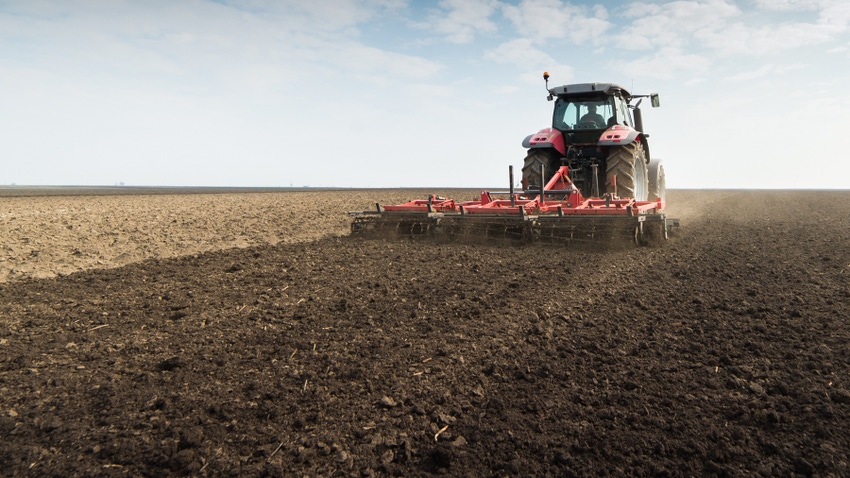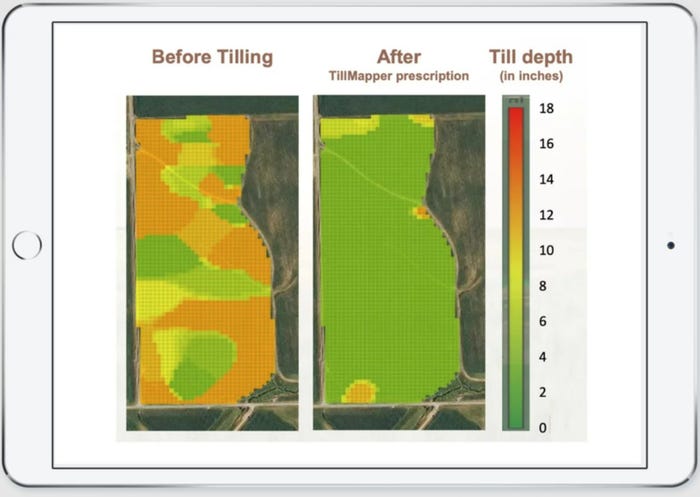
Soil compaction robs your farm of yield, but tillage takes a chunk out of your profits. One company offers a way to work ground only in places that improve the soil and save you money.
Lars Dyrud is a space physicist by training who spent the first half of his career conducting research on Earth and space science. The second half of his career has focused on entrepreneurship, mainly with companies using machine learning to make maps — soil, compaction, carbon, moisture and fertility. He says his company, EarthOptics, can do it cheaper, better, faster and more accurately.
One such tool is TillMapper, which maps a grower’s field showing how compact the soil is at different depths, and then provides a prescription for tilling in the right place at the right depth.
“What we want to help farmers do is reduce soil disturbance and save them time and money by focusing those efforts in areas where tillage is actually going to have a benefit,” Dyrud says.
Problem with compaction
Compaction increases soil density, causing a host of problems for plants, including:
poor root growth
reduced nutrient uptake
reduced water uptake
nitrogen deficiency
potassium deficiency
yield loss
According to research by Goldman Sachs, compaction costs $20 billion in lost yield in the U.S. “So, many growers want to remediate compaction where it occurs because it goes straight to their top line,” Dyrud explains.
The result, he says, is some growers till everywhere, every year. But excessive tilling is not the answer.
Tillage is expensive in terms of equipment, fuel and time. But there is one area farmers may not consider — wasting all the input costs on fields that will not offer a return on the investment.
Dyrud observes that between 30% and 50% of any given field benefits from tillage. “We think there’s at least approximately $1.5 [billion] to $2 billion of wasted expense tilling soil that has no benefit. It is either not compacted or will not improve after that tillage.”
Solution through mapping
TillMapper offers a customized tillage prescription for variable tilling (tilling at variable depths) and spot tilling (tilling only on specific parts of the field that are compacted). It can also be adjusted according to grower preferences for compaction threshold, maximum tillage depth and specific crop.
“We wanted to be able to show farmers that they could dramatically reduce their tillage, saving money, saving diesel, saving time and expense, but also improve soil health by only disturbing the soil that would benefit from being tilled,” Dyrud explains.

KNOW YOUR COMPACTION: TillMapper provides growers with a prescription to create a uniform field. (EarthOptics)
EarthOptics worked with the Case IH Ecolo-Tiger 875 automated tillage system, the rippers lifted and lowered in accordance with the prescription to the correct tillage depth. Dyrud says it saved the farmer 40% of what it would have cost if the grower would have tilled the entire field at a 12-inch depth. “That translates to about a $15 per acre savings,” he concludes.
Dyrud says it is more than just cost savings, adding that farmers gain improved soil structure and soil health properties, plus increased carbon sequestration.
Read more about:
Soil CompactionAbout the Author(s)
You May Also Like






